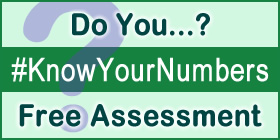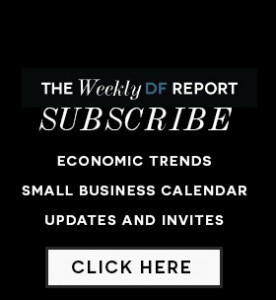Your Financial Dashboard at a Glance
You know the dangers of driving blindly. But let’s get a little more specific…
What if your car didn’t have a dashboard?
Imagine driving around, completely unaware of how fast you’re going or how much fuel you have left. You could run out of gas and be stranded on the side of the road. Or worse, you could get pulled over for excessive speeding and have to pay hefty fines and higher insurance premiums for years to come.
But if you ignore the financial dashboard of your business, the damage could be far worse. You could lose your entire business.
In fact, 95% of small business owners can’t read their financial dashboard. It’s no coincidence that nearly an equal percentage of all small businesses fail, according to Harvard Business School.
Learning the basics that elude so many small business owners will significantly improve your business’ chances of not only surviving, but thriving, for years to come.
Three Critical Gauges
You’re familiar with your car’s dashboard. But what sort of gauges make up the financial dashboard of your business?
There are three:
1. Your profit and loss statement. This is like your speedometer. It measures how fast your business is growing. At a quick glance, you can tell if the money you’re making is more than the money you’re spending.
2. Your cash flow statement. This is like the gas gauge in your car. It measures how far you can go with your existing cash before the car (your business) conks out.
3. Your balance sheet. This is like an oil pressure indicator on your dashboard. It shows you how much risk you have in your business. Too little, and your car won’t have what it needs to run. Too much, and you could blow a gasket!
Just How Fast Is Your Business Going?
At the center of your car’s dashboard is your speedometer. It’s essential for driving successfully. Unless you’re on cruise control, you’re probably checking it every few seconds.
Much like your speedometer, your profit and loss statement is an essential gauge for your business. It tells you if the money you’re making (your revenues) is greater than the money you’re spending to operate your business (your expenses).
In the early years when you’re first building your business, your expenses are bound to be greater than your revenues.
Why?
Because it takes time for customers to learn how great your product or service is. It also takes time to gain credibility and to attract people to your website or location. Expenses flood in quickly; revenues are generated more slowly.
The key is to track this information. And that’s exactly what your profit and loss statement does.
Money in… Money out.
When you drive, you frequently check your speedometer. The same ought to be true of your profit and loss statement. You should be looking at it at least once per month.
Up next, you’ll learn how to use your profit and loss statement to safeguard (and even grow) your business. We’ll also introduce you to the other critical gauges – your cash flow statement and your balance sheet.
 Take the Assessment
Take the Assessment


